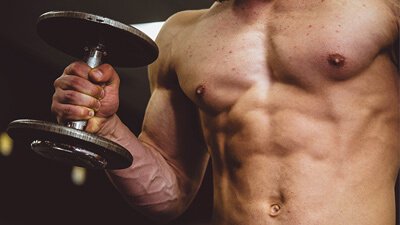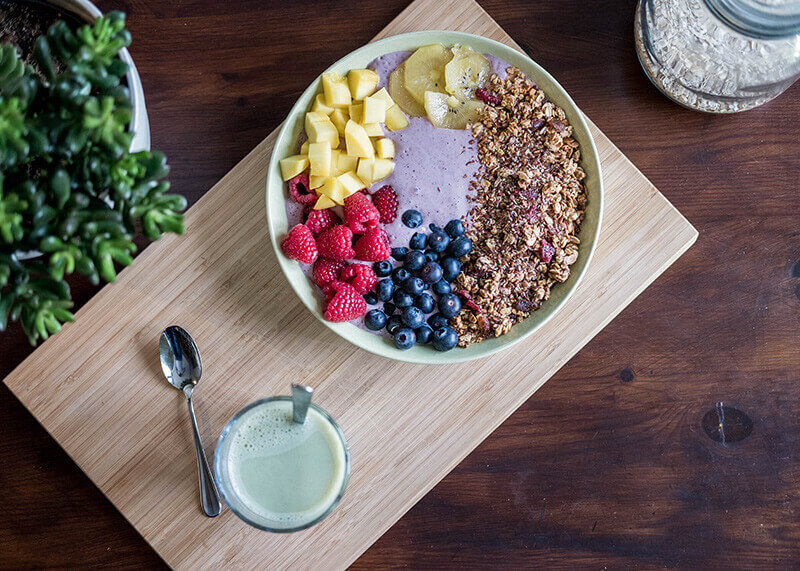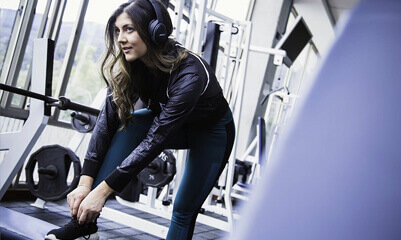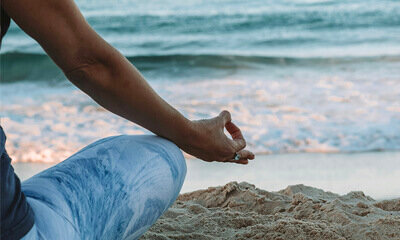Do your workouts leave you feeling stiff and sore for days afterward?
It’s entirely reasonable for exercise-induced soreness to show up the day after a workout, but if it stays around for longer than 24 to 48-hours, it could affect your progress in the gym.
Why Recovery Matters
When we hit the gym for a training session, our nervous system begins to ramp up long before you step on a treadmill or lift a weight. The central nervous system controls the signals between your brain and muscular system.
The CNS is responsible for your ability to engage your physical body and mind on your workout. Days when your CNS is resting and primed correctly, are days you can expect to break new personal records.
When the CNS is fatigued and unbalanced, then expect a terrible workout, or even an injury. Stress from workouts, pressure at work or home, and an active social life all take their toll on your central nervous system. If the CNS does not receive sufficient rest and recovery, then physical and mental dysfunctions occur.

How to get big arms like a pro bodybuilder – Muscle hypertrophy training
How to get big arms quick? The best way for you is to do it naturally. However, there are some things you must understand. We will tell you some secrets to arm growth workouts and muscle hypertrophy training principles.
The Dangers of Over-Training
Over-training is not a myth. Overloading the CNS with too much workout stress, combined with poor nutrition and insufficient rest, is a recipe for disaster. The inability to engage the CNS optimally and create the “mind-muscle” connection, exposes you to injury during your workout.

How long does it take to recover from overtraining? / photo: Unsplash.com
Consistently over-doing it in the gym leads to excessive tearing of muscle fibers under workout stress. If you have experienced prolonged soreness and stiffness for two or three days after a workout, it’s because you’ve over-exerted yourself and your body doesn’t have the nutrients available or the physical capability to heal itself in time for your next workout.
This effect is also known as DOMS (Delayed Onset Muscle Soreness), where the effects of over-training are felt the day after a workout and last for 24-48 hours.
No athlete can consistently train at maximum levels of intensity for extended periods of time without burning out. Effective and efficient training requires a balanced approach to how you handle your workouts.
Training for Recovery
Training for recovery is a sensible and productive training strategy that suits professional and amateur athletes, as well as sports and fitness enthusiasts. Your training schedule should include a CNS ramp period of two weeks.
During this ramp phase, your nervous system becomes used to your workout plan and the movements involved with the exercises for your legs, core, and upper body.

Muscle soreness recovery / photo: Unsplash.com
Progressively increase the intensity and workload in your training over the next 4 to 6-weeks after the initial ramp phase. During this “power phase,” gradually build up your workouts until you are training at your maximum peak of strength and intensity at around the 5 to the 6-week mark. During this power-plateau, you have the opportunity to try and set new personal records in your exercise routine.
After the power phase of your training is complete and you’ve set a new PR, it’s time to take your foot off the gas pedal and recover with a “De-load” phase. Take a week to 10 days and do some light cardio and light weight workouts to keep your body loose.
Repeat this strategy throughout the training year, and you can expect to consistently break through your training plateaus by learning to manage your CNS.
Optimize Your Nutrition for Recovery
Adjusting your diet to suit recovery from your training is the best way to stay ahead of the daily muscle stiffness experienced in your workouts. The stiffness and soreness from millions of muscular micro-tears made during your exercise require a nutrient-dense diet to aid in their recovery and prepare for the next training session.

Post workout nutrition / photo: Unsplash.com

7 Health Benefits of Avocado – Is it Good for Losing Weight?
Avocados actually don’t have that much protein in them. But they are one of the best sources of natural healthy fat, contain a lot of important vitamins and minerals, can help naturally manage your cholesterol levels and are good for a weight loss.
Analyze your diet and look for any refined carbs or bad fats that you consume. Sugar and processed foods increase systemic inflammation within the body, increasing muscle stiffness and hampering recovery. Rebuild your diet with nutrient-dense sources of healthy fats, free-range protein, and whole grain carbs.
Know your calorie number and make sure your diet is optimized to hit your calorie requirement every day. Find a nutritionist to help you with creating a meal plan that focuses on recovery and relief of muscle distress from training.
Stay Hydrated
Water is essential for a good workout and recovery from exercise-related stiffness. Our bodies are more than 80% water, and dehydration can affect muscular performance and stamina by up to as much as 60%.
Sore and stiff muscles need water to draw glycogen and protein into the muscles to repair and refuel for the next training session.

Water – the best exercise recovery supplement 🙂 / photo: Unsplash.com
Forgetting to drink your recommended 8 to 12 glasses of water a day will increase the severity and duration of DOMS, while dramatically reducing your body’s ability to recover.
Start every morning with a big glass of water to reduce the body’s acidity and make sure that you drink plenty of water before stepping into the gym.
Get Your Sleep
Sleep is essential for recovery from workout related stiffness.
Sleep soothes sore muscles by starting the healing process of knitting back together torn muscle fibers using amino acids from proteins consumed through your meals.
TIP: Do you love cooking? Try 10 High In Protein Meals That Don’t Entail Chicken
Sleep also clears the brain and nervous system of accumulated dietary and environmental toxins while removing and feelings of tension and stress from the CNS.

Sleep for muscle recovery / photo: Unsplash.com
Studies show that active people require a minimum of 8 hours of sleep every night to maintain the body’s ability to recover from workouts.
Depriving the body and mind of sleep and adequate rest prolong the symptoms of DOMS and dramatically reduces your performance in the gym. Make sure you get your beauty sleep.
Supplements for Enhanced Recovery
Do supplements work? Are they worth the money?
These are common questions asked by athletes and training novices. The bottom line is that it’s vital to understand that supplements can never replace the benefits of a nutrient-dense diet.
That said, supplements offer a tremendous advantage to both the training effect, as well as muscular and nervous system recovery. If your nutrition and training are on point, then supplements will enhance your bodies recovery and improve performance in the gym.

Supplements for Enhanced Recovery / photo: Unsplash.com
With so many supplements available online, how do you know what works and what doesn’t? Stick to reputable brands with solid customer testimonials and only purchase the basics of what you need to improve your recovery.
Start with protein powder and some amino acids to improve your bodies protein synthesis. This supplement helps your body repair muscle tissue and relieve the symptoms of stiffness and soreness.
Make sure you purchase a multivitamin and calcium supplement. A multivitamin helps your body absorb the nutrition from your food and ensures that your system has all the necessary vitamins needed for optimal metabolic function.
Calcium improves cell communication and new cell generation, which makes it ideal as an addition to a recovery-based supplement protocol.
Relaxeril™ is a quality muscle relaxant supplement that actually works as promised. It combines high doses of ancient traditional medicinal herbs and essential nutrients scientifically proven to assist recovery. This supplement helps relieve the symptoms of sore and stiff muscles while treating and preventing muscle cramps, spasms, and tension. It promotes a deep and long-lasting sleep that ensure your CNS recovers optimally, and you’re ready to hit the gym for your next training session.
Reduce Stress
Part of your recovery strategy should include stress relieving activities and practices. Excessive physical and mental stress causes the adrenal system to release a hormone known as cortisol. This destructive hormone delays the recovery process and increases the intensity and duration of DOMS.
If you are training hard in the gym, try to take as much time off as possible to sit and lay around the house or take a nap.

How to deal with stress /
photo: Unsplash.com
It’s also a wise idea to get out into the fresh air and do activities that revitalize your CNS, such as a walk on the beach or a visit to the local amusement park. Everything you can do to reduce stress in your life will show its reward by reducing recovery time.

Balance Your Diet – Meal Planning Full-Speed Ahead
Building a balanced diet sounds easier than it really is. But it doesn’t mean that you should refrain from eating certain food groups just because you read an article about how unhealthy it can be.
Wrapping Up – Track Your Experience
Your training is a journey to your ideal physique. Whether you’re following a fat loss diet, trying to tone up, or build muscle, following a recovery based exercise and nutrition strategy will help you stay ahead exercise-induced muscular stiffness and soreness.
Workout tracking App / photo: Unsplash.com
Track your training, nutrition, and sense of well-being in a journal. Note how you feel at the beginning of every day and which muscle groups feel tender, stiff, or sore from your previous training session.
Write down your workouts, as well as everything you eat for the day. Make adjustments to your training and nutrition based on your notes and keep tweaking things until you notice your body recovering from workouts efficiently. There’s no reason why you need to be stiff and sore for days on end after a workout.
Take these tips for a recovery-based training strategy and apply them to your workout and meal plan. If you learn to manage your CNS and recover properly, you can expect faster relief from stiff muscles and more opportunities to set new personal records in your training.












